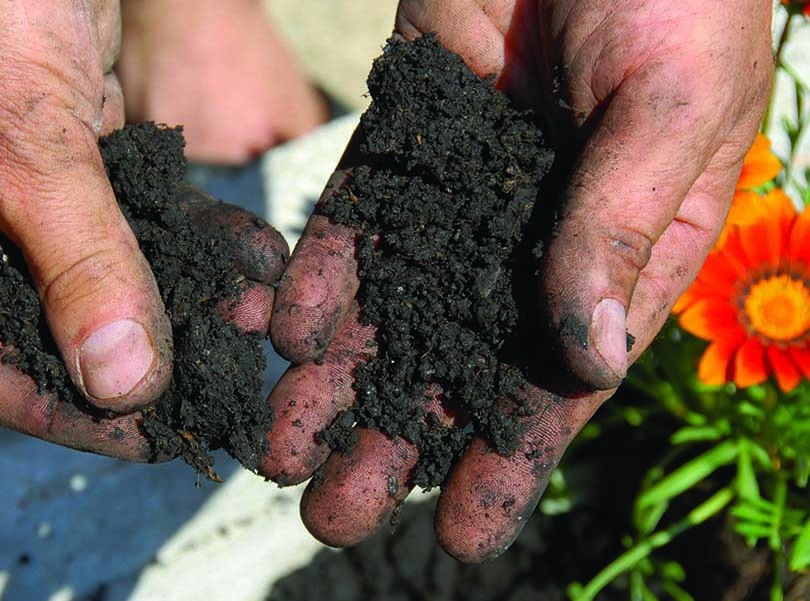By Kristen Hannum
One of the glories of fortunate beginning gardeners are those first harvests. If you lucked into loamy soil, it turns out to be amazingly easy to grow more tomatoes, peppers, squash, beans and corn than you ever guessed possible. Visions of selling your own veggies at farmers markets seem just a matter of a few more raised beds and a little more time and organization.
And then there comes the decline. Your harvests aren’t so bountiful. And unless you take some classes, read a couple books and columns or have a knowledgeable friend, the joy of gardening just keeps retreating.
You probably already know the secret: it’s in your soil. You need to amend your soil regularly, because with every harvest it’s depleting. Even natural gardening depletes soil’s vital nutrients.
Not only will your harvests diminish if you don’t fertilize, the nutrients in what you harvest will too. If your soil, for instance, is low in phosphorus, your vegetables will be less nutritious.
But then it gets complicated. How much fertilizer? When? What kind? The numbers for the nitrogen, potassium and phosphorus content stare from the bags like some physics formula for dirt.
There’s nothing more important in your garden than the dirt you grow your plants in. But like everything worth knowing, the science of soil nutrients can’t be learned in a day. It’s more complicated than how much to water or the slam dunk of knowing what plant hardiness zone you’re in, but once you have a grasp of soil you’ll be armed with knowledge every bit as valuable as knowing not to plant that palmetto in Glenwood Springs or how not to drown or dehydrate your petunias.
A good start in learning about your soil is through testing.
Jim Self, manager of the Soil, Water and Plant Testing Lab at the Colorado State University Extension, says that autumn is a good time to test your soil. In the fall, your plants already used some of the nutrients in the soil, so you have a good idea of what you need to focus on to amend it.
Self says the kits you can buy at the store are a fine place to start — they’ll give you a ballpark idea of your soil’s needs and pH.
If you want a more detailed understanding, send a sample of your soil to the Colorado State Extension along with $35 and it will be tested for pH, organic matter, nitrate, phosphorus, potassium, zinc, iron, copper, manganese, boron, lime and even its electrical conductivity. (Go to soiltestinglab.colostate.edu and choose “Horticultural Applications for Gardeners” for directions.)
The report you get back isn’t a spreadsheet of numbers, but is rather written up in a narrative — a kind of story about your soil, what it has too much of, what it longs for and what’s just right.
Testing will help you apply the right amount of fertilizer, something that even experienced gardeners can get wrong. “People tend to over apply fertilizer, whether chemical or organic,” Self says.
Like overwatering, overfertilizing can actually be worse for a plant than not enough fertilizing. “Too much fertilizer will spoil the soil,” Self says.
Plants getting too much nitrogen all at once, for instance, can cause the plant to grow faster than its root system can keep up with, stressing the plant and reducing the numbers of flowers and fruits. Too much fertilizer can also attract pests, increase soil salinity, lower the pH and cause the plant to get too much of one type of nutrition and not enough of another.

